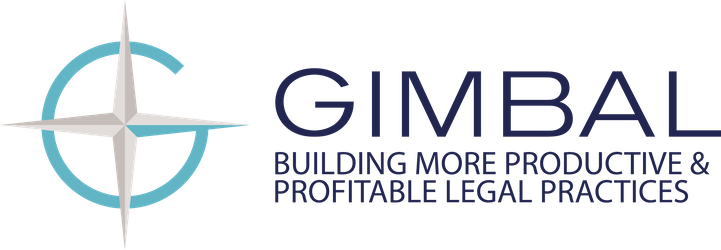Thank you to Not Your Average Law Job™'s friend and supporter Gimbal – Lean Practice Management Advisors for supplying this article. If you’re an entrepreneurial lawyer frustrated when things take longer or seem more difficult than they should be, the legal professionals at Gimbal can help you improve your practice’s operational efficiency.
Humans adapt to broken processes. We’re really good at it. We solve problems and create workarounds, and those workarounds become the new normal. But what if your “normal” isn’t actually efficient? Relying on “the way you’ve always done it,” leads to a lot of missed opportunities for improvement.
To maximize the efficiency of your practice, you need to improve your activity-to-output ratio. That is, you need more output for the same or less effort.
Let’s say your habit is to vacuum before you dust. As you dust, bits of dirt will fall to the freshly vacuumed floor, so you may have to go back and touch up those areas. By simply switching the order of the tasks, you could improve your activity-to-output ratio (less activity, less effort, better result). However, if you’re not thinking about HOW you clean—if you just follow your “normal” process—you may not even notice your own inefficiency.
Bringing it back to the practice of law, there are many ways to improve efficiency—automation, delegation, elimination, a change in the order of your tasks—but first, you have to see beyond your habits. You need to assess your daily work through the optic of adding value and eliminating waste, rather than simply relying on the way you’ve always done things.
Our free guide, 8 Ways You’re Losing Time & Money in Your Practice, explains exactly what it means to add value and describes the 8 classic forms of waste in a law practice. They are:
- Defects (errors, omissions, rework)
- Over-production (producing too much, too soon)
- Waiting (delays and wasted time)
- Non-utilized talent (the wrong people doing the work)
- Transportation (inefficient movement of information and things)
- Inventory (too much work in progress)
- Motion (inefficient movement of people)
- Extra Processing (doing work that’s not required)
It’s a simple framework you can apply immediately. Use it yourself and share it with your team. Ask yourselves where you experience any of the 8 wastes.
Once you learn to see tasks through this optic, you will never look at your own work the same way again. You’ll be able to spot every place where your habits are hiding the waste and making you inefficient. Armed with this information, you can implement strategies to improve your efficiency and operations.
It may take a few tries and some weeks to establish new, more efficient habits, but it’s worth the effort. Improving your activity-to-output ratio will increase your efficiency overall, and ensure you can consistently deliver more value for yourself, your firm, and your clients.
